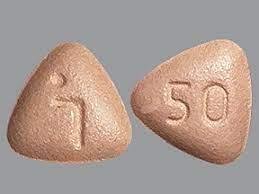Daridorexant Disease Interactions
There are 5 disease interactions with daridorexant.
Daridorexant (applies to daridorexant) narcolepsy
Major Potential Hazard, Moderate plausibility.
Daridorexant is contraindicated in patients with narcolepsy.
Daridorexant (applies to daridorexant) alcohol/drug abuse
Moderate Potential Hazard, Moderate plausibility. Applicable conditions: Alcoholism, Drug Abuse/Dependence
Patients with a history of abuse or addiction to alcohol or other substances may be at increased risk for abuse of or addiction to daridorexant and should be monitored closely.
Daridorexant (applies to daridorexant) COPD/pulmonary impairment
Moderate Potential Hazard, Moderate plausibility.
Daridorexant is a respiratory depressant and should be used with caution if prescribed to patients with impaired respiratory function. This drug has not been studied in patients with moderate to severe sleep apnea requiring CPAP or in patients with severe chronic obstructive pulmonary disease (COPD).
Daridorexant (applies to daridorexant) depression/suicidal ideation
Moderate Potential Hazard, Moderate plausibility.
Daridorexant can worsen depression and suicidal thoughts and actions and should be used with caution in patients with depression. These patients should be monitored closely and any preventive measures should be taken.
Daridorexant (applies to daridorexant) hepatic dysfunction
Moderate Potential Hazard, Moderate plausibility. Applicable conditions: Liver Disease
Daridorexant is not recommended in patients with severe hepatic dysfunction. The maximum recommended dosage in patients with moderate hepatic dysfunction is 25 mg once per night.
Switch to professional interaction data
Daridorexant drug interactions
There are 683 drug interactions with daridorexant.
Daridorexant alcohol/food interactions
There is 1 alcohol/food interaction with daridorexant.
More about daridorexant
- daridorexant consumer information
- Check interactions
- Compare alternatives
- Reviews (174)
- Side effects
- Dosage information
- During pregnancy
- Drug class: miscellaneous anxiolytics, sedatives and hypnotics
- Breastfeeding
- En español
Related treatment guides
Drug Interaction Classification
| Highly clinically significant. Avoid combinations; the risk of the interaction outweighs the benefit. | |
| Moderately clinically significant. Usually avoid combinations; use it only under special circumstances. | |
| Minimally clinically significant. Minimize risk; assess risk and consider an alternative drug, take steps to circumvent the interaction risk and/or institute a monitoring plan. | |
| No interaction information available. |
See also:
Further information
Always consult your healthcare provider to ensure the information displayed on this page applies to your personal circumstances.


